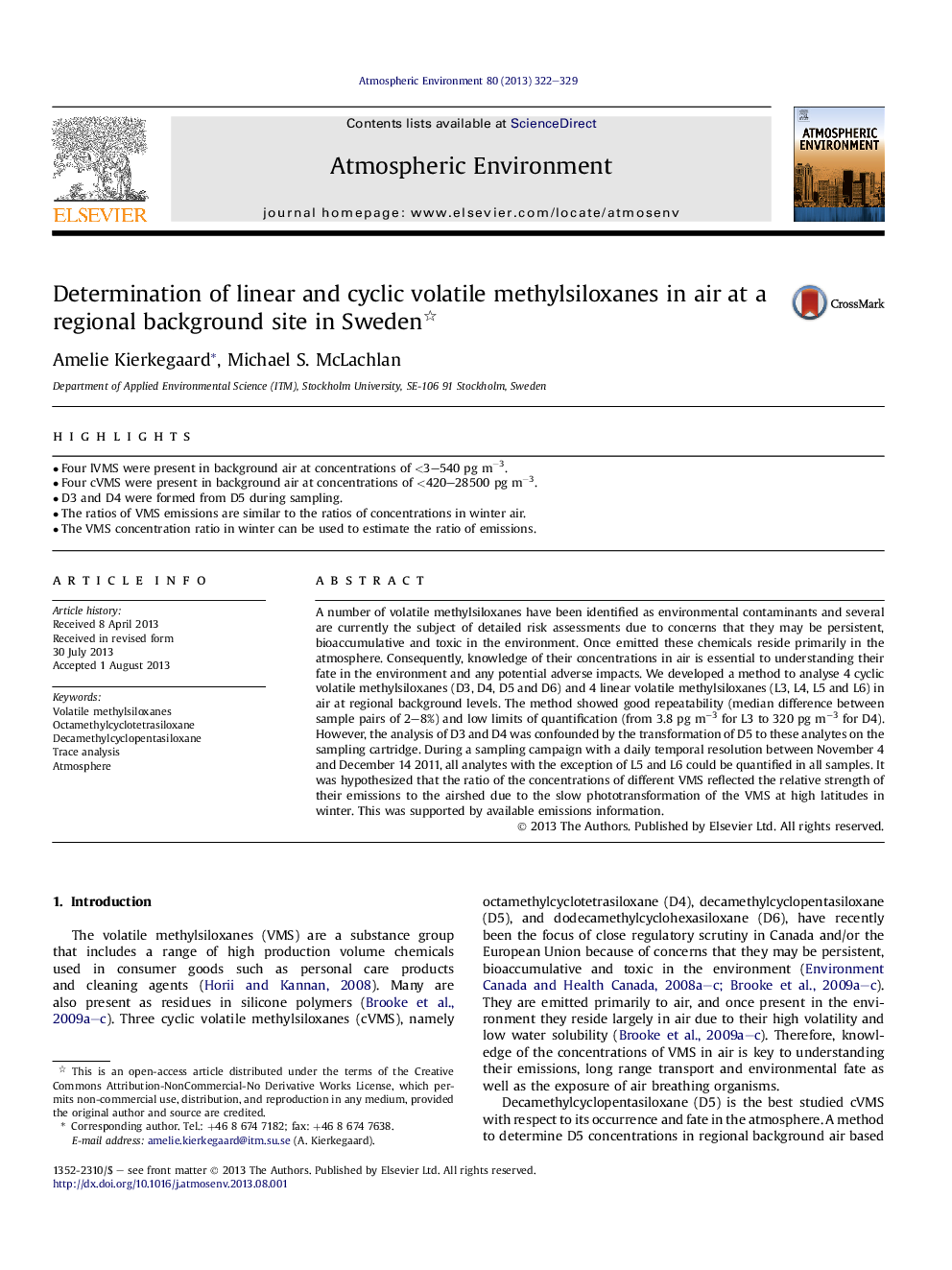| Article ID | Journal | Published Year | Pages | File Type |
|---|---|---|---|---|
| 6340658 | Atmospheric Environment | 2013 | 8 Pages |
Abstract
A number of volatile methylsiloxanes have been identified as environmental contaminants and several are currently the subject of detailed risk assessments due to concerns that they may be persistent, bioaccumulative and toxic in the environment. Once emitted these chemicals reside primarily in the atmosphere. Consequently, knowledge of their concentrations in air is essential to understanding their fate in the environment and any potential adverse impacts. We developed a method to analyse 4 cyclic volatile methylsiloxanes (D3, D4, D5 and D6) and 4 linear volatile methylsiloxanes (L3, L4, L5 and L6) in air at regional background levels. The method showed good repeatability (median difference between sample pairs of 2-8%) and low limits of quantification (from 3.8 pg mâ3 for L3 to 320 pg mâ3 for D4). However, the analysis of D3 and D4 was confounded by the transformation of D5 to these analytes on the sampling cartridge. During a sampling campaign with a daily temporal resolution between November 4 and December 14 2011, all analytes with the exception of L5 and L6 could be quantified in all samples. It was hypothesized that the ratio of the concentrations of different VMS reflected the relative strength of their emissions to the airshed due to the slow phototransformation of the VMS at high latitudes in winter. This was supported by available emissions information.
Keywords
Related Topics
Physical Sciences and Engineering
Earth and Planetary Sciences
Atmospheric Science
Authors
Amelie Kierkegaard, Michael S. McLachlan,
